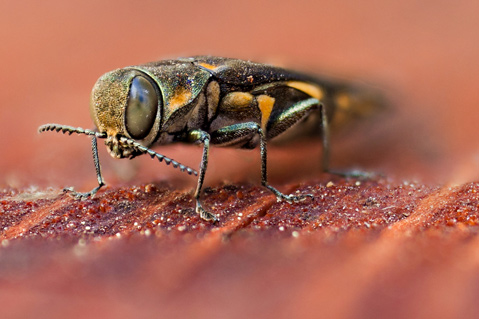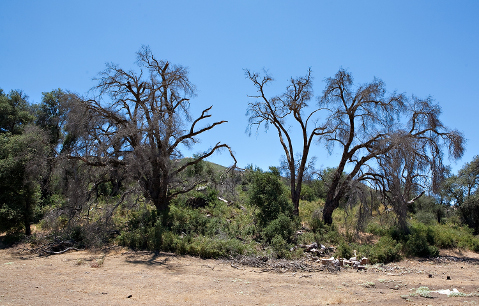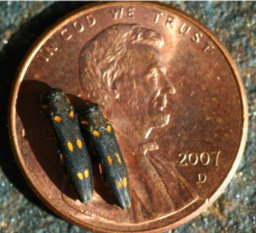Goldspotted Oak Borer Endangers Oaks
Invasive Pest Found in Los Angeles County on Edge of Los Padres

Just as bark beetles are killing pines and contributing to massive wildfires in Northern California, Southern California’s oak trees face a similar pest. An invasive bug called the goldspotted oak borer — a tiny black beetle barely half-an-inch long — has killed an estimated 80,000 trees in San Diego County, where it was spotted in 2004, and has now been found in northern Los Angeles County on the edge of Los Padres National Forest.

Roughly 100 miles from Santa Barbara, Green Valley near Lancaster is where an infestation of the pest was confirmed on August 28 by the Los Angeles County Agricultural Commissioner’s Office. The larvae of the flat-headed beetle, which is native to southeastern Arizona and Baja California, kills coast live oaks, canyon live oaks, and California black oaks when successive generations feed on the thin layers immediately under the trees’ bark, eventually girdling the tree and stopping the vascular flow of water and nutrients. Other infestation locations are Idyllwild in Riverside County and the Weir Canyon area in Orange County.

Though the bug can fly from tree to tree, biologists believe humans have helped move the the pest hidden in firewood taken from one location to another. Borer-infested trees are marked by D-shaped holes that the adult beetles make when they eat their way through the bark — generally maturing in May through September — and sometimes dark-colored bark staining. Oaks that have been infested for several years show thinning in their crown and gradually die.
No chemical or pesticidal controls exist to fight the goldspotted oak borer, and limiting the bugs’ spread is the current pest management strategy. A public workshop held in Santa Barbara about two years ago was followed by insect traps placed in several parks and campgrounds in the county. These have been monitored by scientists with the County Agricultural Commissioner’s office, although expected reductions in the ag professional staff may make that problematic. The public is asked to observe their drought-dried oaks for possible beetle infestation and report sightings to the UC Cooperative Extension or county entomologist Brian Cabrera at (805) 681-5600.
Editor’s Note: This story was updated to add the source of the pest presence information.



